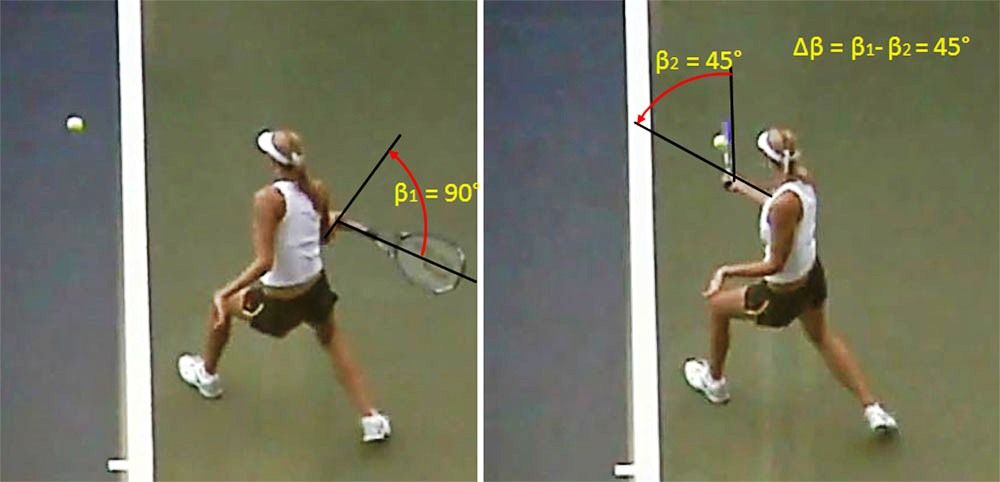dominikk1985
Legend
I have an interesting analogy for both FHs.
the modern WTA FH is basically a pull. the player will set the angles at the end of the backswing (double bend structure) and then pull the whole structure around the body passivley using the big muscles of the core and legs.
the ATP FH on the other hand is more seqmented. the wrist will stay neutral and the racket to the side fence as long as possible. then as the body rotates the wrist lays back and supinates and then the rotation slows down quickly and the racket whips through independent from rotation.
instead of a pulling engine the hips and core here acts more like a whip handle which charges the whip and then stops to allow the elastic energy to release.
The advantage of the whip vs the pull is that it is a more sudden movement only requiring a short backswing and creating RHS almost immediately while the pull is a powerfull motion but needs more time to build up because it lacks the suddenness (i.e longer swing). the pull is a gradual acceleration while the whip is an almost immediate acceleration from the point the wrist lays back (which is late).
although probably for many women that pull motion might still make sense because the have relatively stronger legs and cores than forearms and wrists so that the might benefit from the long passive swing compared to the "reactive" whippy swing because their muscles might not be strong enough to convert that big stretch (although stosur and henin did very well and they are both strong but not huge girls).
the modern WTA FH is basically a pull. the player will set the angles at the end of the backswing (double bend structure) and then pull the whole structure around the body passivley using the big muscles of the core and legs.
the ATP FH on the other hand is more seqmented. the wrist will stay neutral and the racket to the side fence as long as possible. then as the body rotates the wrist lays back and supinates and then the rotation slows down quickly and the racket whips through independent from rotation.
instead of a pulling engine the hips and core here acts more like a whip handle which charges the whip and then stops to allow the elastic energy to release.
The advantage of the whip vs the pull is that it is a more sudden movement only requiring a short backswing and creating RHS almost immediately while the pull is a powerfull motion but needs more time to build up because it lacks the suddenness (i.e longer swing). the pull is a gradual acceleration while the whip is an almost immediate acceleration from the point the wrist lays back (which is late).
although probably for many women that pull motion might still make sense because the have relatively stronger legs and cores than forearms and wrists so that the might benefit from the long passive swing compared to the "reactive" whippy swing because their muscles might not be strong enough to convert that big stretch (although stosur and henin did very well and they are both strong but not huge girls).
Last edited:

